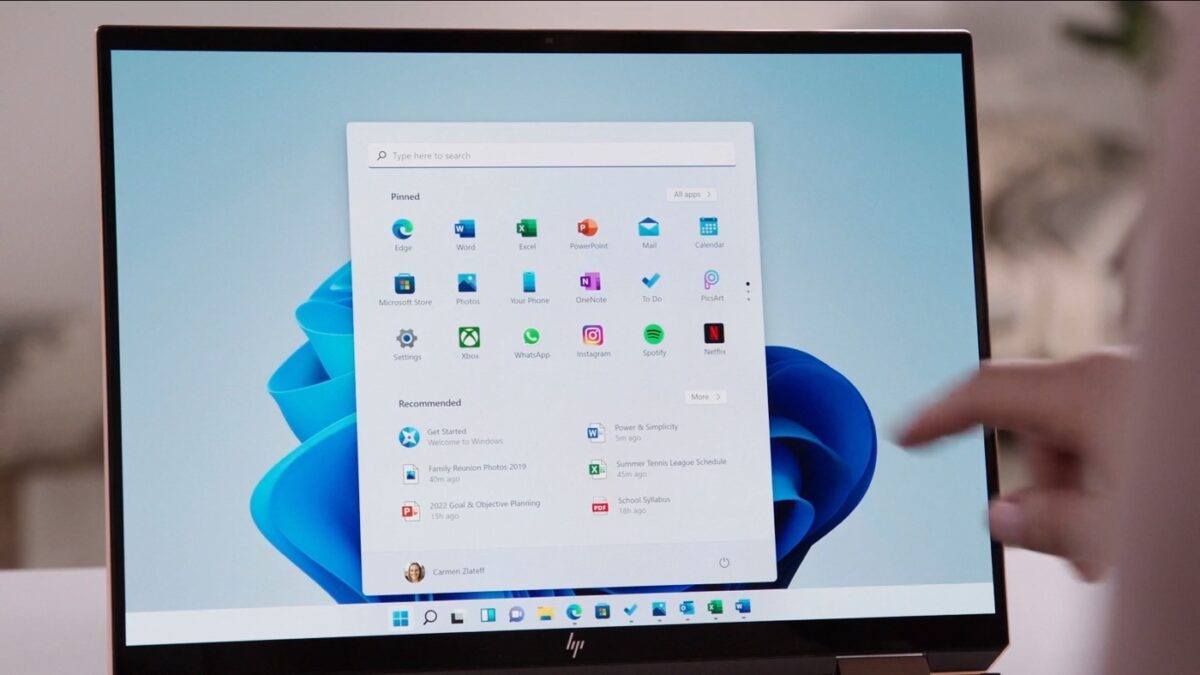

#Windows 11 Pc
(The more cynical take is that the new requirements are meant to drive new PC sales, an interpretation made all the more nefarious by ongoing pandemic-driven PC part shortages and price increases. There are plenty of user-facing changes, sure, but the PCs that run Windows 11 (at least officially) need to support a range of hardware- and firmware-level security mechanisms that are fully supported but optional in Windows 10. The new version of Windows is more preoccupied with the places where Windows already is and is likely to stay-risk-averse, money-rich, security-conscious businesses.

#Windows 11 android
Microsoft has shifted its focus to providing solid versions of its apps on iOS and Android, and even Microsoft's modern-day phones run a Microsoft-flavored version of Android rather than anything Windows-related. " Windows Everywhere" was ambitious, but the dream is dead. And Windows Phone is dead, murdered by a combination of user and developer disinterest driven by confusing messaging and baffling corporate neglect.Īnd that's at least part of the reason why, after a release that treated widespread adoption as its primary goal, Microsoft is releasing a brand-new version of Windows that isn't even supported on computers more than 3 or 4 years old. The Xbox, while successful, remains narrowly focused on gaming and media-streaming. UWP apps never took off, and Microsoft's new play to make the Microsoft Store relevant is to allow developers to submit whatever kinds of apps they want to it. Advertisementįurther Reading OneCore to rule them all: How Windows Everywhere finally happened
#Windows 11 windows 10
And since UWP apps would be able to run not just on PCs but also on Xbox and Windows Phone, speedy Windows 10 adoption in the Windows-dominated PC industry would kick off a virtuous cycle that would bolster Microsoft's other hardware and software efforts. Make Windows 10 big enough, the thinking went, and developers would be more willing to migrate from their old Win32 apps to newer Universal Windows Platform (UWP) apps and easy distribution through the Microsoft Store. The problem for Microsoft is that achieving one goal-the same version of Windows running on almost all PCs-hasn't necessarily had the results that Microsoft was hoping for. But in theory, nearly every computer with Windows 10 installed will eventually be updated to the newest version, and that gives Microsoft a larger and more consistent platform than it has had in a very long time.

#Windows 11 windows 7
Microsoft has put out a dozen-ish distinct releases that are all called Windows 10, and the newest version of Windows 10 is at least as different from the version that launched in 2015 as (say) Windows 7 was from Windows Vista. Those top-line numbers do require some context. Statcounter says that nearly 80 percent of all Windows systems worldwide run Windows 10 the Steam Hardware survey pegs Windows 10 usage at or above 90 percent, suggesting an even greater level of acceptance among enthusiasts. Microsoft actually accomplished its main goal with Windows 10: by any measure, it is the most widespread and most universally accepted version of Windows since XP. Windows could still change, but a new twice-a-year servicing model would keep that change coming at a slow-but-consistent pace that everyone could keep up with.įurther Reading Review: Windows 10 is the best version yet-once the bugs get fixed Some in the company billed it as " the last version of Windows"-one big, stable platform that would simultaneously placate change-averse users, huge IT shops that would have kept using Windows XP forever if they had been allowed to, and software developers who would no longer need to worry about supporting multiple wildly different generations of Windows at once. The OS was billed as a return to form that would appeal to people put off by Windows 8's divisive touchscreen-oriented interface while still retaining touch-friendly features for people who had bought a PC tablet or a laptop with a touchscreen.
#Windows 11 upgrade
Microsoft wanted everyone to use Windows 10.įaced with slow adoption of Windows 8 and the stubborn popularity of Windows 7, Microsoft made Windows 10 a free upgrade for anyone using either version-the offer technically expired years ago, but to this day, old Windows 7 and 8 product keys still activate Windows 10 without protest.


 0 kommentar(er)
0 kommentar(er)
